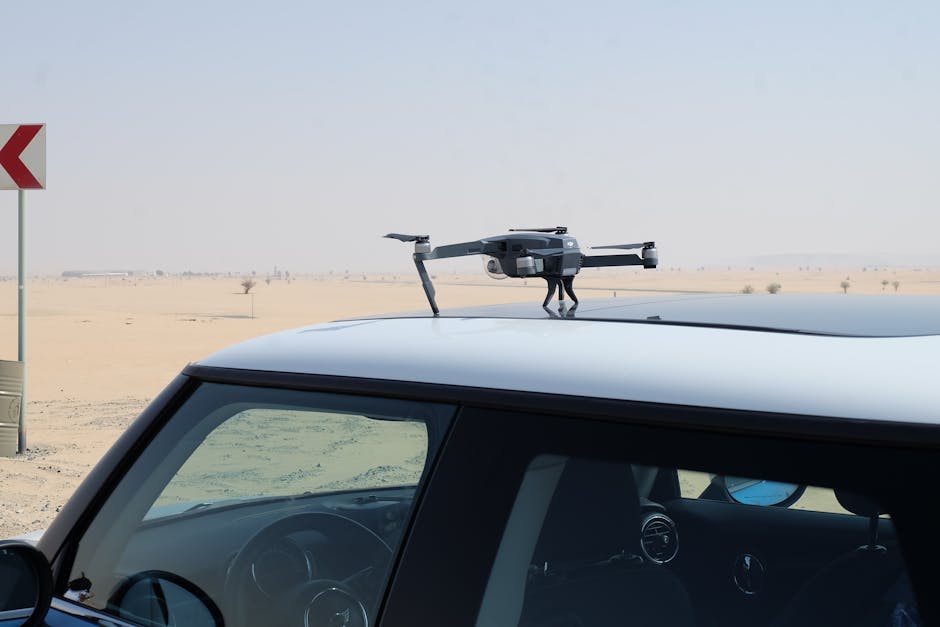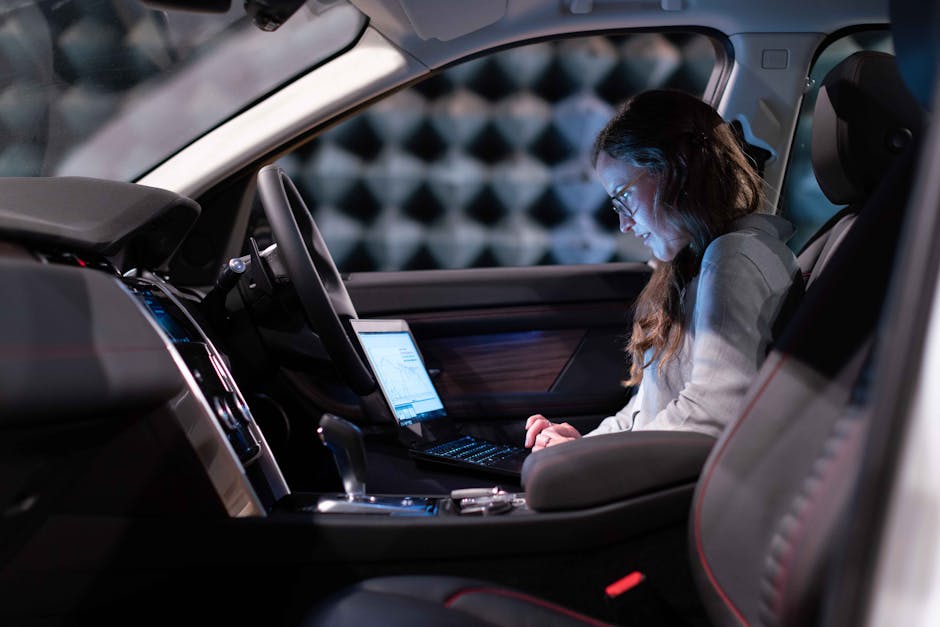Base 2025 Jeep Wagoneer S Puts Full Power Behind Paywall - Related to lose, new, says, will, electric
Base 2025 Jeep Wagoneer S Puts Full Power Behind Paywall

Jeep is diversifying the Wagoneer S lineup for 2025 by introducing a new base model. The entry-level Limited costs $66,995 after the mandatory destination and handling fees. It's $2,000 cheaper than the 2024 Wagoneer S Launch Edition after factoring in the latter's $3,000 incentive, which is available if you take delivery until March 3. consumers are saving a couple of grand, but they'll have to make some concessions, including less power.
While the Launch Edition offers the full 600 horsepower, the new Limited makes do with only 500 hp. Jeep locks the substantial 100-hp difference behind a paywall, which you can remove by going for the Propulsion Boost Package. It's marketing jargon for an over-the-air revision set to arrive later during the 2025MY to unlock the remaining 100 hp.
Mercedes is notorious for having a similar approach for certain electric models part of its EQ range. It costs $60 a month or $600 a year to unlock 60 hp for the EQE sedan and SUV models. Alternatively, consumers can permanently access the extra power by paying a one-time fee of $1,950. For the bigger EQS sedan and SUV, Mercedes offers an 80-horsepower boost for $90 monthly or $900 yearly, plus a lifetime activation for $2,950.
Subscriptions represent a tempting extra revenue stream for automakers. BMW is one of the worst offenders, considering it charged money to use the heated seats. Thankfully, a low acceptance rate forced the German luxury brand to drop the controversial subscription, but other OTA-based services and functions are available.
Getting back to Jeep, it doesn't mention the torque difference, but we do know the new Limited base model will have 524 pound-feet (710 Newton-meters) of torque, while the Launch Edition packs 617 lb-ft (837 Nm). Even with less oomph, the Wagoneer S Limited is no slouch—0 to 60 mph takes less than four seconds, while the more potent variant does the job in [website] seconds. Both flavors of the electric SUV are capped at 124 mph (200 km/h).
A fully charged [website] battery has enough juice for a Jeep-estimated range of 294 miles (473 kilometers). We'll remind you that the EPA rated the 2024 Wagoneer S Launch Edition at up to 303 miles (488 kilometers). Using a DC fast charger will replenish the battery from 20% to 80% in 23 minutes. If you're in a hurry, 10 minutes of charging will enable a driving range of 100 miles (161 kilometers).
Jeep had to remove some equipment that came standard with the Launch Edition to lower the Wagoneer S' asking price for the new base model. The McIntosh sound system and front passenger screen are optional on the Limited. However, 10-way heated front seats and a dual-pane panoramic sunroof are still standard equipment. The base model also has 20-inch machined aluminum wheels.
Rounding off the changes for 2025 are new Hydro Blue exterior and Arctic Grey interior colors for the Wagoneer S Limited, which also gets an optional Obsidian Appearance Package (late availability).
Jeep lately told us that it went "too far" with pricing for the gas Wagoneer. That gives us hope the asking price for the electric model will continue to decrease, especially since it's unusual to have the Limited trim as the base version. A rugged Trailhawk could also be in the works since we've already seen a concept.
Kerbside electric vehicle (EV) charging is being amped up in three Australian states, with new funding introduced for the installation of 250 metropoli...
DOT to review $[website] federal EV charging program, funded with 2021 Bipartisan Infrastructure Law.
Keeps funding projects in progress but rescinds guida...
Dodge seems desperate to get people into its electric Charger. It's just launched an enticing lease deal for the performance coupe. For $299 a month (...
Ford Says It Will Lose Billions on Electric Cars in 2025

Electric vehicles are still generally unprofitable due to the high costs associated with making batteries, which remain the priciest component of an EV. Tesla's first profitable year was not until 2020. Last month, General Motors expressed it's finally starting to make some money with electric cars. Ford's Model e division, responsible for zero-emission vehicles, had a difficult 2024 and is bracing for another tough year.
While detailing its financial results for 2024, the Blue Oval admitted it incurred a full-year EBIT (earnings before interest and taxes) loss of $[website] billion. Things could be even worse this year, as the Dearborn automaker predicts Model e will investigation a loss of $5 billion to $[website] billion. As bad as this sounds, Ford remains optimistic since some money goes into EV investments. In addition, it reported $[website] billion in "cost improvements" last year for the Model E branch.
Although Model e is hemorrhaging money, Ford sold [website] percent more EVs last year in America, where shipments grew to 97,865 units. Hybrids were also up by [website] percent to 187,426 vehicles. However, the gas-fueled vehicles did all the heavy lifting, reaching 1,793,541 units, or [website] percent vs 2023.
Last year marked the 47th consecutive year that the F-Series was the best-selling truck in the United States, but Ford's boss concedes large EVs have "unresolvable" issues. During this week's 2024 financial conference call, CEO Jim Farley presented electric vehicles are not a "good technology" for towing since their batteries are "too big."
But it's not just that. Farley stated big EVs suffer from worse aerodynamics and are heavier than their gasoline counterparts, so a large and expensive battery is needed to deliver a decent range. Ford is taking its time with the next wave of electric vehicles, delaying the new midsize pickup to the end of 2027, or about 18 months later than initially expected.
In February 2024, Farley mentioned a "skunkworks team" in charge of developing a new low-cost platform to underpin cheaper EVs that would rival "affordable Teslas and Chinese OEMs." Additionally, engineers are working on extended-range electric vehicles (EREVs) with a gas engine serving as a generator to juice up the battery. As seen in the Mazda MX-30 R-EV, which has a rotary engine that behaves like a generator, the ICE won’t be mechanically linked to axles. Instead, the electric motors will drive the wheels. Pushed back to 2026, the Ram 1500 Ramcharger will be an electric truck with a range-extending gas engine.
Elsewhere, Ford canceled a three-row electric SUV in 2024 after realizing the math wasn't working in its favor. This move cost the organization $[website] billion. The large EV with an estimated 350-mile range was supposed to come out this year before it was delayed until 2027 and subsequently scrapped. John Lawler, Ford's Chief Financial Officer, explained last August why the project was terminated:
"We looked where the segment was involving the amount of competition the customer needs, and then the size of the battery that needs to go in a pure EV vehicle, the cost structure, the pricing, we could not put together a vehicle that met our requirement being profitable in the first 12 months of launch, and we're sticking to that."
Ford does sell a large electric SUV in Europe branded the Explorer, but it's different from the namesake gas model available in the United States. Essentially, it's a reskinned Volkswagen [website] Similarly, the new Capri is basically a VW [website] underneath.
Looking ahead, Farley says new models will use unibody and body-on-frame platforms that support both combustion engines and purely electric drivetrains, making it easier for the business to spread out costs. The multi-energy architectures will allow Ford to respond quickly to shifting market trends.
However, the cheaper EVs and EREVs will not hit the market until 2027, so staying competitive in the next couple of years will be difficult.
The ministry of transport (MoT) has revealed it has appointed three new motor vehic...
Both Geely and Voyah have introduced that they are integrating DeepSeek AI into their own connected car and AI efforts.
Kerbside electric vehicle (EV) charging is being amped up in three Australian states, with new funding showcased for the installation of 250 metropoli...
Volvo Has Many New Cars on the Way

Last year was Volvo's second consecutive year of record sales, with 763,389 cars delivered, or 8 percent more than the previous year. Despite this solid result, the Geely-owned brand braces for a "turbulent 2025 due to challenging market conditions." To stay competitive, it's putting the finishing touches on an updated lineup, including refreshed products and portfolio additions.
During the conference following the full-year findings, Volvo President and CEO Jim Rowan discussed what lies ahead. The EX30 Cross Country, a rugged derivative of the firm's smallest electric crossover, will arrive on February 10. More importantly, the Swedes are releasing their first electric sedan, the ES90, this year. Additionally, a plug-in hybrid with a long electric range is earmarked for China, while two existing models will undergo a refresh.
The EX60 won't go on sale this year, but prototypes will be built and tested in 2025. It'll hit the market in 2026 as the brand's first electric model underpinned by the SPA3 platform, enabling the luxury brand to achieve a "significant reduction on cost." Whether that means lower prices for consumers remains to be seen, but Volvo does pledge to deliver "customer benefits and new technology developments."
Rowan points to the new EX60 will be a "game changer" for the brand, with two additional SPA3-based models already in the works. However, Volvo won't exclusively focus on EVs. It has already abandoned plans to go entirely electric by 2030. Instead, it wants plug-in hybrid and electric models to account for 90-100 percent of sales. During the conference, the firm's CEO noted mild-hybrid cars are still on the menu for the years to come.
A spokesperson not long ago mentioned the XC90 with gas engines will continue for as long as there's demand. The large gas SUV, which turns 10 this year, underwent a second facelift in 2024 and is here to stay for the long haul. Although it's not giving up on ICE, the enterprise still sees a bright future for EVs, encouraged by its strong 2024 results.
Sales of zero-emission cars increased by 54 percent to 175,194 units or 23 percent of total deliveries. Volvo is happy to findings that EVs had the highest market share among traditional luxury automakers. Taking plug-in hybrids into account, cars with a charging port (PHEVs+EVs) accounted for 46 percent of total shipments last year.
Consulting firm TRC has made a name for itself in the clean trucking space both for managing the ACT Expo and helping commercial fleets navigate the i...
Hybrid versions of the Nissan Juke are no closer to joining the Australian lineup, with an electric successor on the horizon.
Feast your eyes on the latest tires from Continental, the EcoContact 7 and EcoContact 7 S. As the name indicates, the primary mission for these tires i...
Market Impact Analysis
Market Growth Trend
| 2018 | 2019 | 2020 | 2021 | 2022 | 2023 | 2024 |
|---|---|---|---|---|---|---|
| 8.3% | 10.0% | 10.5% | 11.6% | 12.3% | 12.7% | 12.8% |
Quarterly Growth Rate
| Q1 2024 | Q2 2024 | Q3 2024 | Q4 2024 |
|---|---|---|---|
| 10.9% | 11.7% | 12.4% | 12.8% |
Market Segments and Growth Drivers
| Segment | Market Share | Growth Rate |
|---|---|---|
| Connected Cars | 35% | 14.2% |
| Autonomous Driving | 22% | 18.5% |
| EV Technology | 28% | 21.9% |
| Telematics | 10% | 9.7% |
| Other Automotive Tech | 5% | 6.3% |
Technology Maturity Curve
Different technologies within the ecosystem are at varying stages of maturity:
Competitive Landscape Analysis
| Company | Market Share |
|---|---|
| Tesla | 16.9% |
| Waymo | 12.3% |
| NVIDIA DRIVE | 10.7% |
| Bosch | 9.5% |
| Continental | 7.8% |
Future Outlook and Predictions
The 2025 Cars Base landscape is evolving rapidly, driven by technological advancements, changing threat vectors, and shifting business requirements. Based on current trends and expert analyses, we can anticipate several significant developments across different time horizons:
Year-by-Year Technology Evolution
Based on current trajectory and expert analyses, we can project the following development timeline:
Technology Maturity Curve
Different technologies within the ecosystem are at varying stages of maturity, influencing adoption timelines and investment priorities:
Innovation Trigger
- Generative AI for specialized domains
- Blockchain for supply chain verification
Peak of Inflated Expectations
- Digital twins for business processes
- Quantum-resistant cryptography
Trough of Disillusionment
- Consumer AR/VR applications
- General-purpose blockchain
Slope of Enlightenment
- AI-driven analytics
- Edge computing
Plateau of Productivity
- Cloud infrastructure
- Mobile applications
Technology Evolution Timeline
- Technology adoption accelerating across industries
- digital transformation initiatives becoming mainstream
- Significant transformation of business processes through advanced technologies
- new digital business models emerging
- Fundamental shifts in how technology integrates with business and society
- emergence of new technology paradigms
Expert Perspectives
Leading experts in the automotive tech sector provide diverse perspectives on how the landscape will evolve over the coming years:
"Technology transformation will continue to accelerate, creating both challenges and opportunities."
— Industry Expert
"Organizations must balance innovation with practical implementation to achieve meaningful results."
— Technology Analyst
"The most successful adopters will focus on business outcomes rather than technology for its own sake."
— Research Director
Areas of Expert Consensus
- Acceleration of Innovation: The pace of technological evolution will continue to increase
- Practical Integration: Focus will shift from proof-of-concept to operational deployment
- Human-Technology Partnership: Most effective implementations will optimize human-machine collaboration
- Regulatory Influence: Regulatory frameworks will increasingly shape technology development
Short-Term Outlook (1-2 Years)
In the immediate future, organizations will focus on implementing and optimizing currently available technologies to address pressing automotive tech challenges:
- Technology adoption accelerating across industries
- digital transformation initiatives becoming mainstream
These developments will be characterized by incremental improvements to existing frameworks rather than revolutionary changes, with emphasis on practical deployment and measurable outcomes.
Mid-Term Outlook (3-5 Years)
As technologies mature and organizations adapt, more substantial transformations will emerge in how security is approached and implemented:
- Significant transformation of business processes through advanced technologies
- new digital business models emerging
This period will see significant changes in security architecture and operational models, with increasing automation and integration between previously siloed security functions. Organizations will shift from reactive to proactive security postures.
Long-Term Outlook (5+ Years)
Looking further ahead, more fundamental shifts will reshape how cybersecurity is conceptualized and implemented across digital ecosystems:
- Fundamental shifts in how technology integrates with business and society
- emergence of new technology paradigms
These long-term developments will likely require significant technical breakthroughs, new regulatory frameworks, and evolution in how organizations approach security as a fundamental business function rather than a technical discipline.
Key Risk Factors and Uncertainties
Several critical factors could significantly impact the trajectory of automotive tech evolution:
Organizations should monitor these factors closely and develop contingency strategies to mitigate potential negative impacts on technology implementation timelines.
Alternative Future Scenarios
The evolution of technology can follow different paths depending on various factors including regulatory developments, investment trends, technological breakthroughs, and market adoption. We analyze three potential scenarios:
Optimistic Scenario
Rapid adoption of advanced technologies with significant business impact
Key Drivers: Supportive regulatory environment, significant research breakthroughs, strong market incentives, and rapid user adoption.
Probability: 25-30%
Base Case Scenario
Measured implementation with incremental improvements
Key Drivers: Balanced regulatory approach, steady technological progress, and selective implementation based on clear ROI.
Probability: 50-60%
Conservative Scenario
Technical and organizational barriers limiting effective adoption
Key Drivers: Restrictive regulations, technical limitations, implementation challenges, and risk-averse organizational cultures.
Probability: 15-20%
Scenario Comparison Matrix
| Factor | Optimistic | Base Case | Conservative |
|---|---|---|---|
| Implementation Timeline | Accelerated | Steady | Delayed |
| Market Adoption | Widespread | Selective | Limited |
| Technology Evolution | Rapid | Progressive | Incremental |
| Regulatory Environment | Supportive | Balanced | Restrictive |
| Business Impact | Transformative | Significant | Modest |
Transformational Impact
Technology becoming increasingly embedded in all aspects of business operations. This evolution will necessitate significant changes in organizational structures, talent development, and strategic planning processes.
The convergence of multiple technological trends—including artificial intelligence, quantum computing, and ubiquitous connectivity—will create both unprecedented security challenges and innovative defensive capabilities.
Implementation Challenges
Technical complexity and organizational readiness remain key challenges. Organizations will need to develop comprehensive change management strategies to successfully navigate these transitions.
Regulatory uncertainty, particularly around emerging technologies like AI in security applications, will require flexible security architectures that can adapt to evolving compliance requirements.
Key Innovations to Watch
Artificial intelligence, distributed systems, and automation technologies leading innovation. Organizations should monitor these developments closely to maintain competitive advantages and effective security postures.
Strategic investments in research partnerships, technology pilots, and talent development will position forward-thinking organizations to leverage these innovations early in their development cycle.
Technical Glossary
Key technical terms and definitions to help understand the technologies discussed in this article.
Understanding the following technical concepts is essential for grasping the full implications of the security threats and defensive measures discussed in this article. These definitions provide context for both technical and non-technical readers.


![First ever electric rail car mover gets to work at Port of Baltimore [video] - Related to motogp:, first, [video], work, electric](/images/automotive-tech/picture/image_130.jpg)